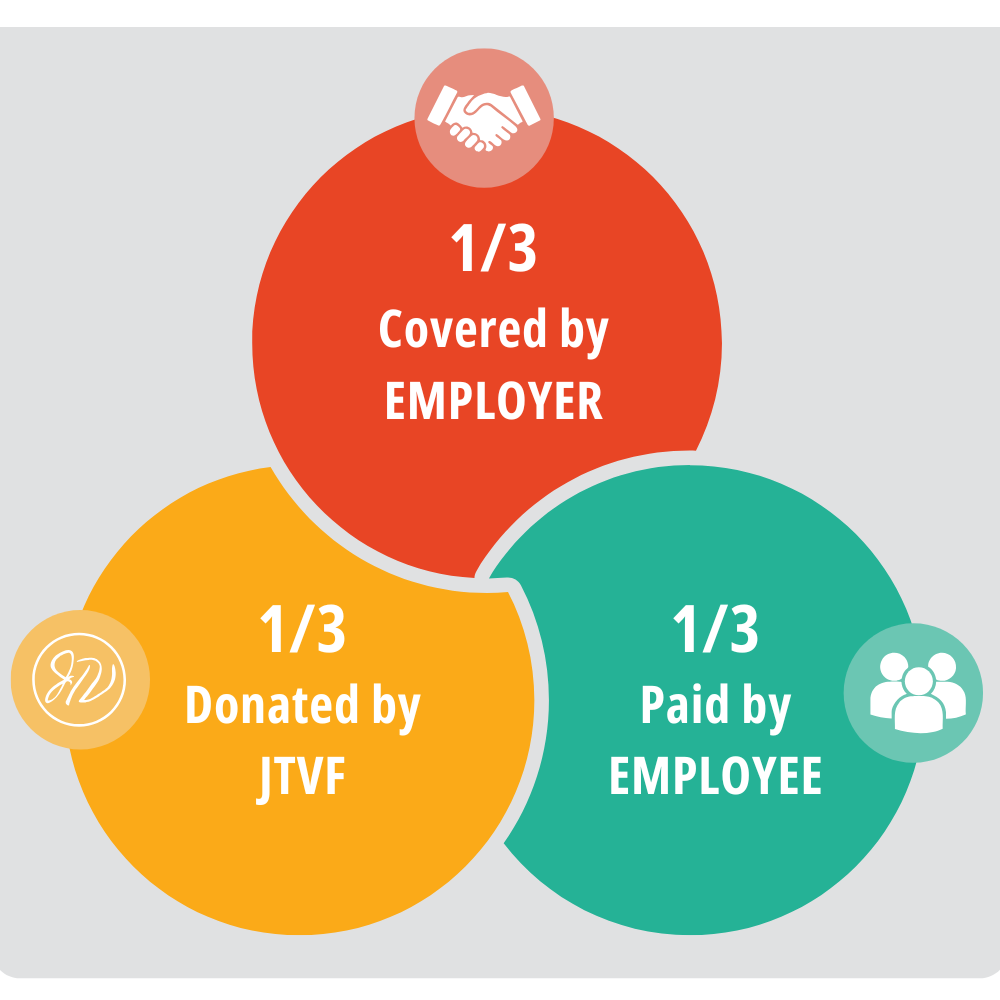Rapid City Tri-Share
Child care challenges shouldn’t hold
your employees— or your business— back.
Rapid City Tri-Share is a simple solution that makes child care more affordable for working families—reducing the family’s cost by 66% while helping employers attract and retain talent.
Many employees earn too much to qualify for state assistance but too little to afford private care. Tri-Share bridges that gap by splitting child care costs three ways:
- 1/3 covered by the employer
- 1/3 paid by the employee
- 1/3 donated by JTVF (John T. Vucurevich Foundation through the Child Care Innovation Fund)
How Employers Can Put Tri-Share to Work
✔Offer the Tri-Share program to one or more employees with dependent children
✔ Support working parents while gaining a happier, more reliable workforce.
✔ Work with a dedicated Tri-Share Coordinator who will guide you through every step—from eligibility to payments.

Employer Participation Requirements
To participate in the Rapid City Tri-Share Program, employers must have a physical location in Rapid City. However, this residency requirement does not apply to employees or child care providers. Child care providers may serve as both an employer and a provider if they meet all other eligibility criteria.
- Sign a Memorandum of Understanding (MOU) with SDAEYC to participate in the program
- Offer an employee benefit covering at least 1/3 of child care costs for at least one eligible employee’s child
- Deduct the employee’s share of child care costs via payroll
- Submit payments to SDAEYC via ACH or check for two-thirds of the total child care cost (covering both the employer and employee shares)
- Provide recruitment and retention data to JTVF to assess program impact
Capacity is limited but available!
The Child Care Innovation fund will support child care for up to 30 children at a time.
Employee Program Eligibililty
The Tri-Share program aims to support low-income families who earn too much to qualify for Child Care Assistance through the South Dakota Department of Social Services but still struggle with child care costs.
To be eligible, a family’s household income must fall between 209% and 325% of the Federal Poverty Line, unless a waiver is granted.
| Household Size | Minimum Income | Maximum Income |
| 2 | $44,204 | $68,738 |
| 3 | $55,699 | $86,613 |
| 4 | $67,194 | $104,488 |
| 5 | $78,689 | $122,363 |
| 6 | $90,184 | $140,238 |
| 7 | $101,679 | $158,113 |
| 8 | $113,174 | $175,988 |
*Based on 2025 U.S. Federal Poverty Guidelines. Eligibility levels for new enrollees will be updated annually when new guidelines are released. Once verified, eligibility is valid for two years.
This program overview answers frequently asked questions.
Join Leading Employers Offering Rapid City Tri-Share


Are you a Rapid City Employer?
Schedule a Complimentary Consultation Today
Review employee eligibility criteria, employer contributions, and administrative expectations
to help you assess your organization’s fit.
EMAIL US | or CALL JACQUI (605)343-3141
Partner Hub
SDAEYC serves as the central hub for Rapid City Tri-Share, providing the coordination needed for successful program implementation. With strong relationships across South Dakota’s early learning sector and firsthand experience as child care providers, SDAEYC is uniquely positioned to connect employers, families, and child care providers—ensuring a seamless and effective partnership.
- Determines employee eligibility
- Determines child care provider eligibility
- Provides support and resources to child care providers needing to improve quality
- Coordinates payments to child care providers from employers, families, and the Fund.
- Provides monthly enrollment and financial reports to JTVF
What Happens When the Pilot Ends?
JTVF is committed to making this initiative a long-term solution, beginning with a three-year pilot program. Our goal is to secure $500,000 in external funding by the end of the 2026 pilot to sustain and expand this work, demonstrating strong community will or national support. Leading employers can play a critical role in ensuring a successful pilot, laying the foundation for ongoing investment. If additional funding is not secured, staff will assess the future of the Child Care Innovation Fund and any remaining resources.